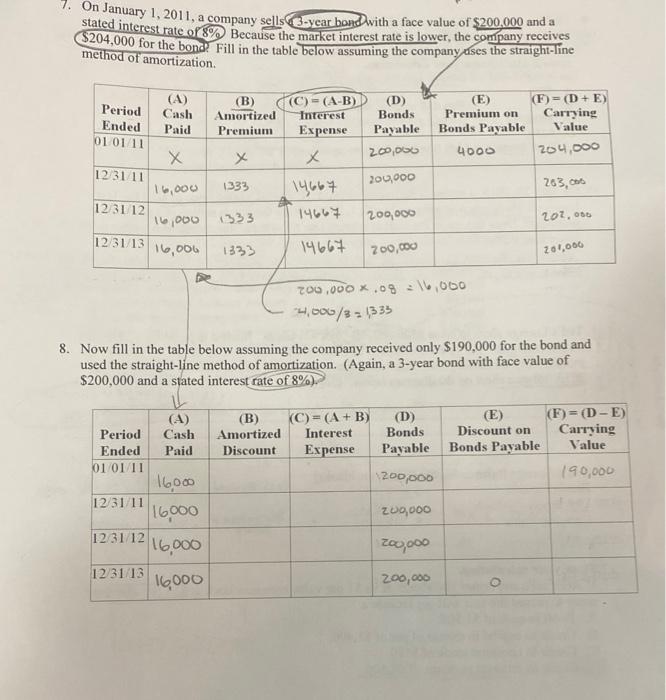Answered step by step
Verified Expert Solution
Question
1 Approved Answer
X (A) (B) (C)-(A-B) (D) Period Cash Amortized Ended Paid Premium 01/01/11 x x 12/31/11 16,000 1333 14667 7. On January 1, 2011, a

X (A) (B) (C)-(A-B) (D) Period Cash Amortized Ended Paid Premium 01/01/11 x x 12/31/11 16,000 1333 14667 7. On January 1, 2011, a company sells 3-year bond with a face value of $200,000 and a stated interest rate of 8% Because the market interest rate is lower, the company receives $204,000 for the bond. Fill in the table below assuming the company uses the straight-line method of amortization. (F)=(D+E) Carrying Value 204,000 263,c Interest Bonds Expense Payable (E) Premium on Bonds Payable 200,000 4000 200,000 12/31/12 16,000 1333 14667 200,000 202,000 12/31/13 16,006 1333 14667 200,000 201,000 200,000 .08 = 16,000 4,000/3 = 1333 8. Now fill in the table below assuming the company received only $190,000 for the bond and used the straight-line method of amortization. (Again, a 3-year bond with face value of $200,000 and a stated interest rate of 8%). (B) (A) (C)=(A+B) (D) Period Cash Amortized Interest Ended Paid Discount Expense 01/01/11 Bonds Payable (E) Discount on Bonds Payable (F)-(D-E) Carrying Value 16,000 1200,000 190,000 12/31/12 12/31/11 16,000 16,000 200,000 200,000 12/31/13 16000 200,000 0
Step by Step Solution
There are 3 Steps involved in it
Step: 1
An amortisation schedule is utilised to calculate the proportion of interest and pri...
Get Instant Access to Expert-Tailored Solutions
See step-by-step solutions with expert insights and AI powered tools for academic success
Step: 2

Step: 3

Ace Your Homework with AI
Get the answers you need in no time with our AI-driven, step-by-step assistance
Get Started


